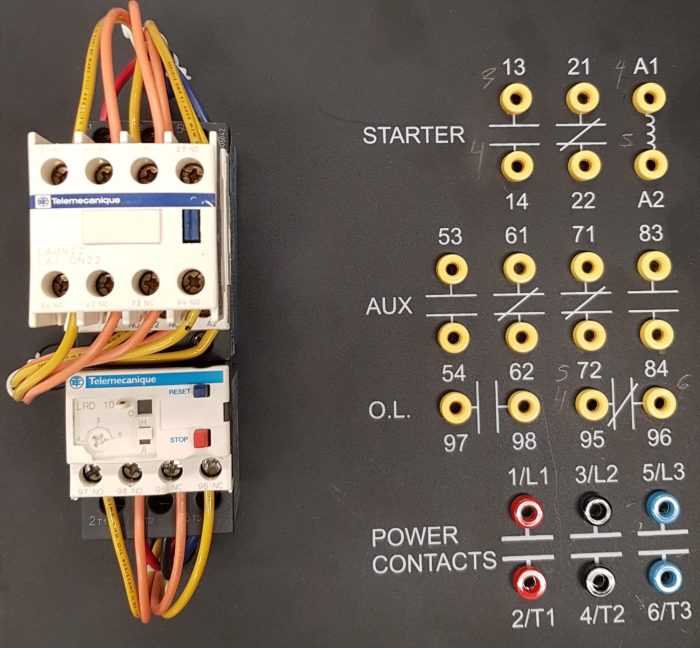Most IEC motor starters use contactors, overload relays, and enclosures to control and protect motors. These components work together to ensure that motors operate safely and efficiently.
In this guide, we will discuss the different types of IEC motor starters, their advantages and disadvantages, and how to select the right starter for your application.
Starter Components
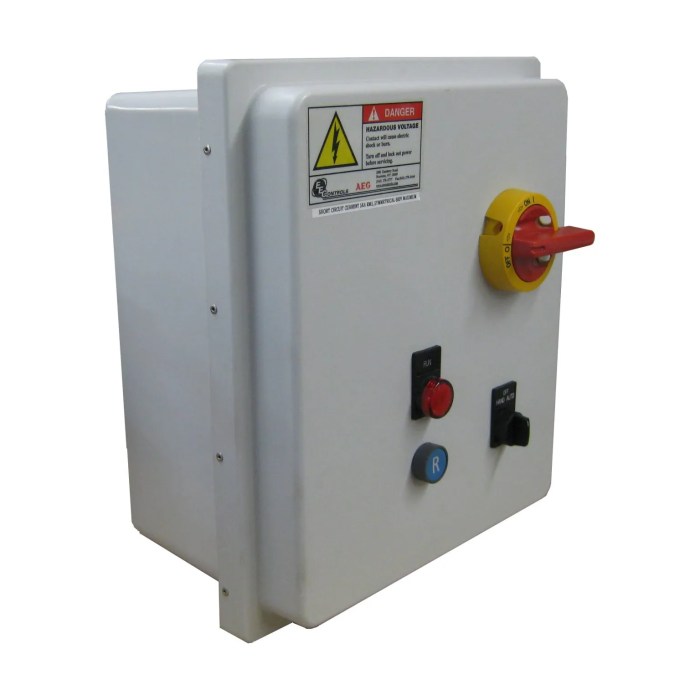
IEC motor starters are essential devices for controlling and protecting electric motors. They consist of several key components that work together to ensure the safe and efficient operation of motors.
The main components of IEC motor starters include contactors, overload relays, and enclosures.
Contactors
Contactors are electromagnetic switches that connect and disconnect the motor from the power supply. They consist of a coil and a set of contacts. When the coil is energized, it creates a magnetic field that pulls the contacts together, completing the circuit and allowing current to flow to the motor.
When the coil is de-energized, the contacts open, interrupting the circuit and stopping the motor.
Overload Relays
Overload relays are protective devices that monitor the current flowing through the motor. If the current exceeds a predetermined level, the overload relay trips, opening the contactor and disconnecting the motor from the power supply. This prevents the motor from overheating and causing damage.
Enclosures
Enclosures provide protection for the starter components from environmental factors such as dust, moisture, and corrosion. They also prevent accidental contact with live parts.
| Component | Function | Characteristics |
|---|---|---|
| Contactors | Connect and disconnect the motor from the power supply | Coil, contacts, arc chutes |
| Overload Relays | Protect the motor from overloads | Current sensing element, trip mechanism |
| Enclosures | Provide protection for the starter components | Material, IP rating |
Starter Types
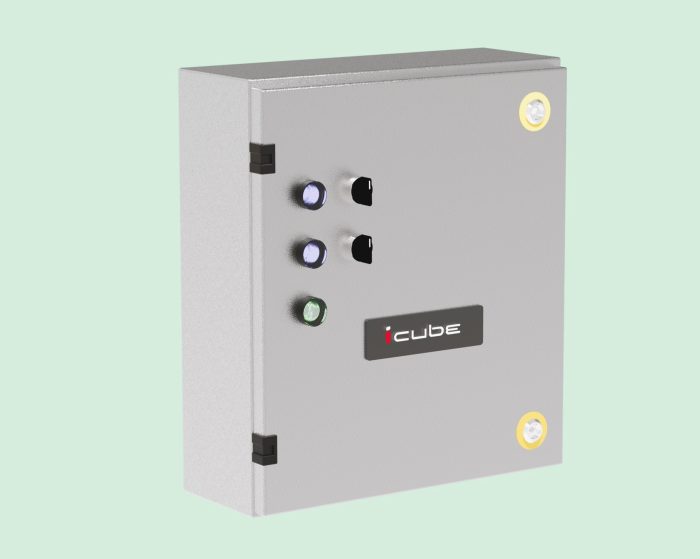
IEC motor starters play a crucial role in controlling and protecting electric motors. Different starter types are available, each with unique characteristics and applications.
Direct-On-Line (DOL) Starters
DOL starters are the simplest and most economical type. They connect the motor directly to the power supply, allowing it to start at full voltage. This simplicity makes them suitable for small motors and applications where high starting torque is not required.
Advantages:
Most IEC motor starters utilize contactors as the primary switching element, which are electromagnetically actuated devices that open and close contacts to control the flow of current to the motor. Interestingly, the structure of a lily ovary, as detailed in this article , shares some similarities with the operation of IEC motor starters.
Both involve the precise control of electrical flow, albeit in different contexts.
- Low cost
- Simple to install and maintain
Disadvantages:
- High starting current, which can cause voltage dips and equipment damage
- Limited starting torque, making them unsuitable for high-inertia loads
Star-Delta Starters
Star-delta starters reduce the starting current by initially connecting the motor in a star configuration. After a short delay, the starter switches to a delta configuration, providing full voltage to the motor. This method reduces the starting current by a factor of three, making it suitable for larger motors and applications where high starting torque is required.
Advantages:
- Lower starting current compared to DOL starters
- Higher starting torque than DOL starters
Disadvantages:
- More complex and expensive than DOL starters
- Switching between star and delta configurations can cause torque pulsations
Soft Starters
Soft starters use electronic components to gradually increase the voltage applied to the motor. This reduces the starting current and torque, minimizing mechanical stress on the motor and driven equipment. Soft starters are suitable for high-inertia loads and applications where smooth starting is essential.
Advantages:
- Reduced starting current and torque
- Smooth starting, minimizing mechanical stress
- Adjustable starting parameters for customization
Disadvantages:
- Higher cost compared to DOL and star-delta starters
- More complex to install and maintain
Starter Selection: Most Iec Motor Starters Use
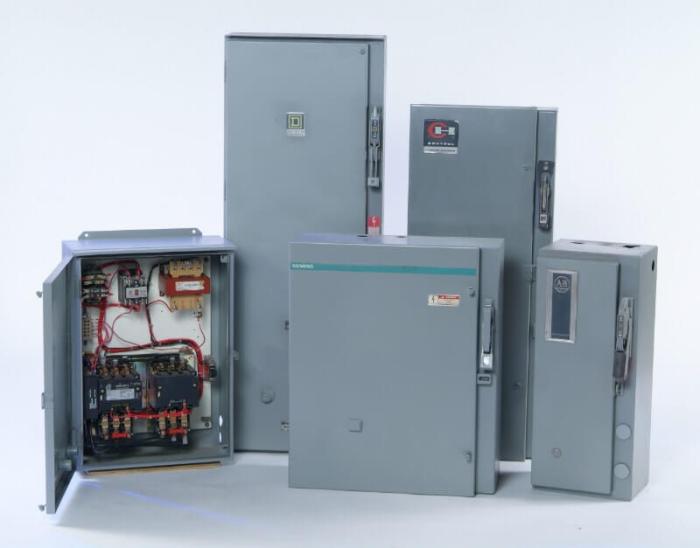
Selecting the appropriate IEC motor starter is crucial to ensure the safe and efficient operation of electric motors. Various factors must be considered during the selection process, including motor characteristics, operating conditions, and specific application requirements.
A well-chosen starter will protect the motor from damage caused by overloads, short circuits, and other electrical faults. It will also provide a convenient and safe means of starting and stopping the motor.
Motor Characteristics
The following motor characteristics must be considered when selecting a starter:
- Motor size (power rating)
- Motor voltage
- Motor current
- Motor speed
- Motor type (AC or DC)
Operating Conditions
The operating conditions of the motor must also be considered when selecting a starter. These include:
- Ambient temperature
- Humidity
- Altitude
- Type of load (resistive, inductive, or capacitive)
- Starting frequency
- Duty cycle
Application Requirements
Specific application requirements may also influence the selection of a starter. These include:
- Safety features required (e.g., overload protection, short-circuit protection)
- Control features required (e.g., remote start/stop, speed control)
- Space constraints
- Cost
Decision Tree for Starter Selection
The following decision tree can be used to guide the selection of an IEC motor starter:
- Determine the motor characteristics.
- Consider the operating conditions.
- Identify the application requirements.
- Select a starter that meets the requirements of the motor, operating conditions, and application.
Starter Installation and Maintenance
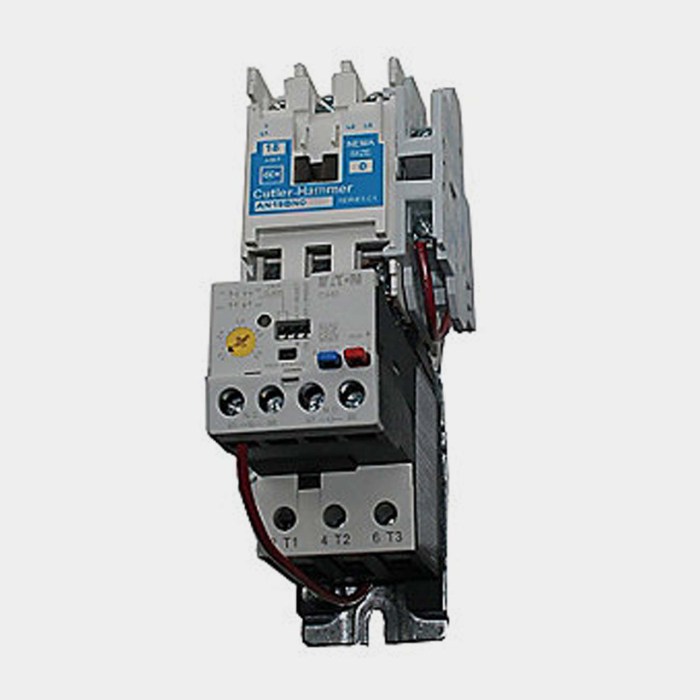
Proper installation and maintenance of IEC motor starters are crucial for ensuring the safe and efficient operation of electric motors. This section discusses the key procedures and precautions involved in these tasks.
Safety Precautions, Most iec motor starters use
- Always disconnect the power supply before performing any work on the starter.
- Verify that the starter is compatible with the motor and application requirements.
- Wear appropriate personal protective equipment (PPE) such as gloves and safety glasses.
- Ensure proper ventilation to prevent overheating.
Installation
- Mount the starter on a stable surface in a suitable location.
- Connect the power supply to the starter terminals.
- Connect the motor to the starter terminals.
- Install any additional components, such as control switches or protection devices.
Maintenance
- Regularly inspect the starter for signs of wear or damage.
- Clean the starter and its components using compressed air or a soft brush.
- Check the tightness of electrical connections.
- Replace any worn or damaged components as necessary.
Troubleshooting
- If the starter does not operate, check the power supply and connections.
- If the motor does not start, check the motor connections and ensure that it is receiving power.
- If the starter trips frequently, check for overloads, short circuits, or other faults.
Starter Applications
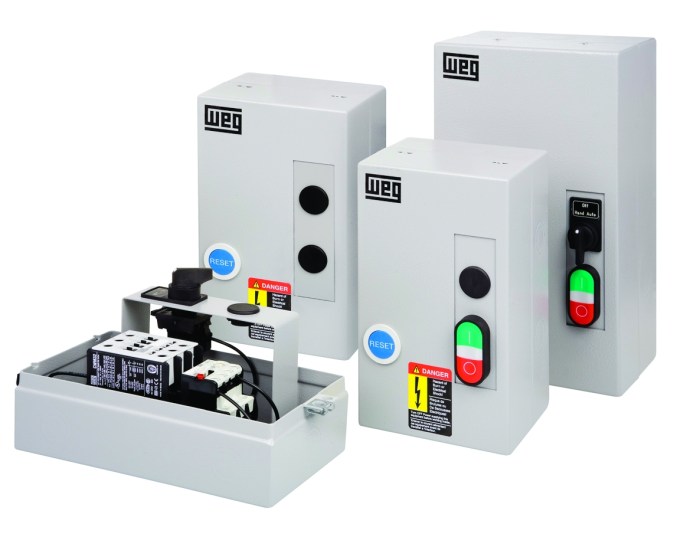
IEC motor starters find widespread use in industrial and commercial settings, serving as crucial components in various electrical systems.
Their primary function is to control the starting and stopping of electric motors, ensuring safe and efficient operation of equipment. Starters provide protection against electrical faults and overloads, safeguarding both the motor and the connected load.
Industrial Applications
In industrial environments, IEC motor starters are indispensable for controlling motors used in:
- Conveyor systems
- Pumps
- Fans
- Compressors
- Machine tools
These starters enable precise control over motor operation, ensuring smooth starting and stopping, as well as protection against overcurrents and short circuits.
Commercial Applications
Beyond industrial settings, IEC motor starters also play a vital role in commercial applications, including:
- HVAC systems
- Escalators
- Elevators
- Refrigeration units
- Commercial laundry equipment
In these applications, starters ensure reliable and efficient operation of motors, contributing to the overall safety and functionality of commercial buildings.
Clarifying Questions
What are the main components of an IEC motor starter?
The main components of an IEC motor starter are contactors, overload relays, and enclosures.
What are the different types of IEC motor starters?
The different types of IEC motor starters include direct-on-line (DOL), star-delta, and soft starters.
How do I select the right IEC motor starter for my application?
To select the right IEC motor starter for your application, you need to consider the motor size, voltage, and operating conditions.
